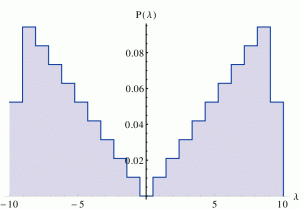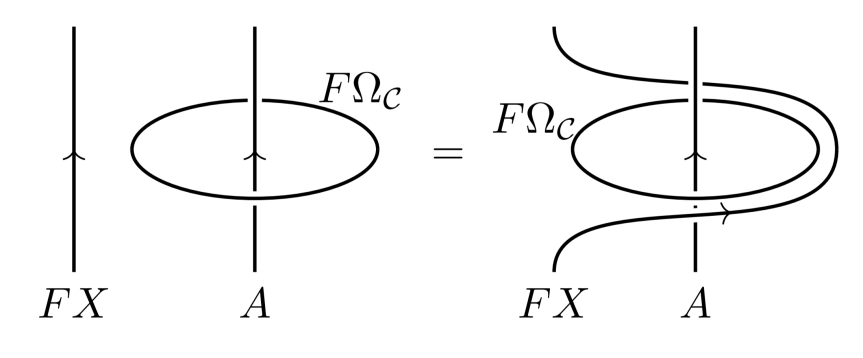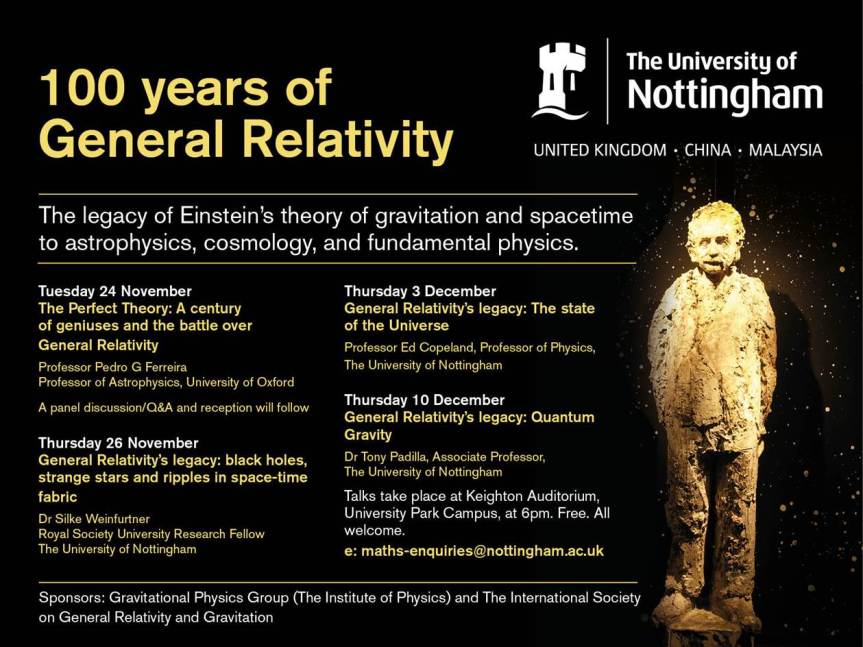I’m winding down my use of Twitter. From now on, active posting will be on Mastodon.
Author: johnwbarrett
Introduction to Non-Commutative Geometry
I gave a course of lectures at the ESI in Vienna on Non-Commutative Geometry in October 2022. The draft lecture notes are uploaded here. A slightly shorter series of lectures was given at the Galileo Galilei Institute June 12-16th 2023.
Chapters: 1. Introduction 2. Fuzzy spaces with symmetry 3. Commutative analogues 4. Dirac operator 5. Real structures 6. Real spectral triples 7. Standard model charges 8. Standard Model masses 9. Fuzzy sphere spectral triple 10. The fuzzy torus 11. Fluctuations (12.-14. to come)
Please let me know (via email) of any corrections or improvements.
Penrose on palatial twistors
The main purpose of this post is to publish a draft manuscript version of the research paper Chameleon Twistor Theory: a Geometric Programme for Describing the Physical World by Roger Penrose, with his permission. This will eventually appear in a book later this year and I will add the bibliographic information when I have it.

Abstract Original motivations are recalled, for the introduction twistor theory, as a distinctive complex-geometric approach to the basic physics of our world, these being aimed at applying specifically to (3+1)-dimensional space-time, but where space-time itself is regarded as a notion secondary to the twistor geometry and its algebra. Twistors themselves may be initially pictured as light rays—with a twisting aspect to them related to angular momentum. Twistor theory provides an economical conformally invariant description of quantum wave functions for massless particles and fields, best understood in terms of holomorphic sheaf cohomology, subsequently leading to a non-linear description of anti-self-dual (“left-handed”) gravitational (and Yang-Mills) fields. Attempts to remove this anti-self-dual restriction (the googly problem) led to a 40-year blockage to the development of twistor theory as a possible overall approach to fundamental physics. However, in recent years, a more sophisticated approach to this problem has been developed—referred to as palatial twistor theory—whose basic procedures are described here, where a novel generating-function approach to Λ-vacuum Einstein equations is introduced.
I will add my own thoughts on this paper here later.
Linearised regge calculus
Here is a paper that I wrote a draft of back in 1987 but never made it to publication: Linearised Regge Calculus.
A long long time ago, I worked on a discrete version of general relativity called Regge Calculus. This is a rather elegant theory invented by the late great Tullio Regge using simplicial manifolds with Riemannian (or Lorentzian) metrics that are flat on each simplex (“piecewise flat”). I was particularly interested in how this could mimic general relativity on large scales, i.e., I wanted to show that if you worked to a finite resolution so that the (smaller) simplicial structure wouldn’t be apparent, then the metrics approximated nice smooth ones obeying Einstein’s equations.
This is a hard problem, but can be simplified by looking a weak gravitational fields, those that are close to flat space. By linearising the equations, one gets something that can be analysed. I got my result in a paper I was rather proud of, A convergence result for linearised Regge calculus. From the abstract: “…solutions of the linearised Regge equations converge to analytic solutions of the linearised Einstein equations.”
However it needed a technical result that is sort of “obvious” but actually highly technical, that the calculation of the curvature from the metric has the same properties in the linearised Regge case as it does for linearised Einstein. I worked it all out, with heavy use of the simplicial approach to algebraic topology which I had learnt by giving supervisions (tutorials to students) on C.R.F Maunder’s course in Cambridge, following his book Algebraic Topology. The results are summarised very briefly in the paper The fundamental theorem of Regge calculus. I called it that because it seemed pretty fundamental, and probably at that age I didn’t care whether anyone else agreed or not (but obviously the editor of the journal didn’t object).
The actual proof is in the preprint posted above. I don’t know where I sent it, but it seems it didn’t make the CERN or the KEK preprint libraries (and the arXiv didn’t exist then, of course). I always meant to revise the presentation a little before publishing. But I never got around to it; there must have been something more important to do. And now I no longer have the tex file I can’t upload it to arXiv (can I?) People keep asking me for it, so here it is!
Stephen Hawking
 I’d like to add some personal notes of my memories of Stephen. There is already an appraisal of his scientific life by Roger Penrose, which would be hard to better. I can add a few anecdotes about what it was like to talk to him.
I’d like to add some personal notes of my memories of Stephen. There is already an appraisal of his scientific life by Roger Penrose, which would be hard to better. I can add a few anecdotes about what it was like to talk to him.
I didn’t know him very well, but as a member of his research group for three years around 1990 would see him regularly and chat in the tea-room, mostly about scientific matters. It was actually easier to see him than you might imagine, since many people found communication difficult and shied away from him, an experience I’m sure many disabled people are used to. The trick was to stand at the side, watch the screen as he typed, and try to guess the complete sentence. If you got it wrong he would grimly continue (and you had to wait a full minute for a whole sentence) but if you guessed right his eyes would flick up to yours and the corner of his mouth would grin. He would be straight on to the next sentence. It was dicey of course, too many wrong guesses and the conversation would terminate, as many hapless visitors who were not on the same wavelength would find. He was patient but not infinitely so.
People were in awe of him. I remember a visitor giving a seminar in DAMTP to which Stephen (perhaps unexpectedly) came. Halfway through, the speaker put up a new slide and Stephen started to say something. During the long wait for a sentence to appear the speaker got flustered, started to criticise his own slide and then completely withdrew it, pronouncing it mistaken. Stephen’s sentence finally appeared: “Could someone open a window?” Much laughter.
There was a one-day conference in Cambridge, probably in the 90s, and Roger Penrose came to speak. Roger started by apologising, saying that he had meant to prepare his talk on the bus between Oxford and Cambridge but had fallen asleep instead. So he summarised some recent work that Stephen had done, saying it must be right because Stephen had maintained the exact opposite view for several years previously. Stephen’s computer clicked into life, and eventually we had the response: “The reason that Roger fell asleep on the bus thinking about his talk is because he had nothing to say.” It was all good-natured, everyone laughed and Stephen was grinning from ear to ear.
The last time I went to the same conference as him was in 2005. I was chuffed that he insisted I chair his talk on his paper Information Loss in Black Holes and moderate the questions. I suppose that time I had spent chatting had finally came to some use. He was obviously struggling at the time with illness but absolutely determined to carry on. Although much is written about his genius (and rightly so) I think it’s the determination that impressed me the most.
Photo: http://www.hawking.org.uk
Dichromatic state sum models
Manuel Bärenz and I have just finished a paper on 4-dimensional topological state sum models. It is posted here (since 12 Jan 2016), and on arXiv. The idea of the paper is to squeeze more out of the Crane-Yetter state sum model and perhaps indicate how to get a viable quantum gravity model (or condensed matter model) from it.
The original CY was defined just using the quantum group version of SU(2), and turns out to be rather too simple be an interesting physics model. The reason is that the group SU(2) is used to “colour” both one- and two-dimensional dual edges. This has the effect that the quantum theory can’t “see” the difference between the one- and two-dimensional stuff.
All this is best seen using a handle decomposition rather than a triangulation. There’s an operation that changes 1-handles into 2-handles (thus changing the topology of the manifold) and the problem with the original CY is that it is invariant under this operation – which is a property that isn’t wanted. As a consequence, CY is the same on lots of different manfolds, which is why it is “too simple”.
One of the things that Manuel and I have is an efficient translation between the triangulation picture and the handle picture. In the handle picture, Jerome Petit had the idea that the 1- and 2-handles can be coloured differently, to give a new set of models that he called “dichromatic”. We have understood that in the triangulation picture, this corresponds to the CY invariant being “nonmodular” (the original CY is “modular”). Interestingly, there are also models in the handle picture that don’t have a CY description at all. We calculated a few simple examples and found that one of them has configurations that are a plausible analogue of “teleparallel gravity” in the formulation given by Baez and Wise. This doesn’t yet mean we have a new quantum gravity model because, firstly, we only used finite groups instead of Lie groups (to keep things simple) and secondly, it isn’t clear that the action will be the gravity action. Still, it is an interesting direction.
What it needs next is to do a lot more examples. Probably any really interesting examples will involve representations of a group or quantum group that are non-unitary. New territory indeed!

Public lectures on Einstein’s general relativity

Random non-commutative geometry
Lisa Glaser and I have started to investigate random non-commutative geometries in our latest paper
Monte Carlo simulations of random non-commutative geometries. The geometries are all specified by a Dirac operator that is a finite-dimensional matrix, so in this theory the partition function is a finite-dimensional integral. We investigated the phenomena that occur by calculating this integral on a computer, in much the same way as you would measure data from an experiment in a lab.
The most fascinating finding is that by tuning a parameter in the action we are able to find a phase transition (audible here!), and at this transition the spectrum of the Dirac operator looks a lot like the spectrum one would expect for a typical manifold in the usual sense of differential geometry. This is surprising, because non-commutative geometries generally look nothing like differential geometries.

The first plot shows the eigenvalue spectrum for the fuzzy sphere using an algebra of 10×10 matrices. The plot has the eigenvalues of the Dirac operator on the horizontal axis and the density of eigenvalues vertically.
The spectrum for the fuzzy sphere is the same as for an ordinary two-sphere in differential geometry, except that the spectrum is cut off after a finite number of eigenvalues (in this case, 200). These spheres are special in that the eigenvalues are in fact all integers, and have a multiplicity proportional to the eigenvalue, due to the spherical symmetry.
A Dirac operator on an arbitrary metric on a surface would not have this symmetry or the degeneracy, but the approximate V-shape of the plot should be the same, at least when the eigenvalues are large enough.

This is exactly what one sees in the second plot, an approximate V-shape with some slightly different detail for small eigenvalues. But the second plot is generated by an ensemble of random non-commutative Dirac operators!
Actually, we nearly didn’t find this. We looked at a range of different random NCG models with a free parameter and accumulated a large number of eigenvalue plots that looked nothing like a manifold. Only when we started to write a section of the paper explaining this did it become clear that a very small number of the plots did look something like a manifold. These plots occur only close to a phase transition, where the properties of the ensemble change sharply when the parameter in the model is changed.
Our findings fit into a general theme for discrete theories, like lattice gauge theory, where continuum-like behaviour occurs at, or near, a phase transition. Thus it seems like a great place to look for quantum gravity in non-commutative models.
Matrix Quantum Gravity
The idea behind the project outlined in my Como lectures is to model a space-time geometry with a (finite-dimensional) matrix. Then quantum geometry (or random geometry) can be modelled by a suitable integral over the space of matrices, which is again a finite-dimensional integral, and thus well-defined.
In general terms, integrating over a space of matrices has been studied a lot, and goes by the name of a “matrix model”. However, in this case the matrix variable is a very specific type of matrix, namely a Dirac operator. The Dirac operator satisfies a number of algebraic conditions, so my new quantum gravity can be thought of as a matrix model for a very specific type of matrices.
The point of using Dirac operators is that a Dirac operator specifies a geometry. In the classical case, the Dirac operator is a differential operator on a manifold and one can extract the metric tensor from it. In the case of a matrix, the number of spinor “modes” that the Dirac operator operates on is finite, so that there is a maximum energy. Physically, if there are matrix quantum geometry models that behave like quantum gravity, this maximum energy should be identified as the Planck scale. So the mysterious Planck-scale cutoff that is needed to make sense of quantum field theory is built in to the model in a fundamental way. Whether there really are viable matrix quantum gravity models is very much an open question, and the point of The Project is to try to answer this.
To define a matrix Dirac operator in a consistent way, the notion of geometry is generalised to “non-commutative geometry”. In this setting, a lot of geometric constructions still make sense. One hopes, for example, that there is a suitable notion of the limiting case of large matrices in which a sequence of matrix Dirac operators converges to one of the usual Dirac differential operators (“taking the Planck scale to infinity”). More loosely, one can understand constructions in non-commutative geometry as the algebraic analogues of familiar constructions in ordinary metric geometry on a manifold. So it is important to have all of the machinery of non-commutative geometry (technically, the Dirac operator is part of a “real spectral triple”).
The basic set-up for matrix geometries is explained in my paper “matrix geometries and fuzzy spaces as spectral triples”. The paper contains the general definitions and a lot of useful data, such as operations on gamma matrices and explicit forms for the Dirac operator. I’m hoping it will be a resource for future efforts at modelling quantum geometry.
Como lectures
I’m giving some lectures at the SIGRAV school in Como on “Non-commutative geometry and quantum gravity”. I’ll put the slides up here as they happen.
Lecture 1: The Planck scale. This lecture reviews the experimental evidence for a fundamental Planck scale. Various theoretical approaches to modelling the Planck scale are mentioned very briefly, mainly concentrating on the predictions of the spectral action suggested by non-commutative geometry.
Lecture 2: Non-commutative geometry: axioms, examples. The axioms of non-commutative geometry are given in this lecture alongside an explanation of how they are satisfied by an ordinary (commutative) manifold. The example given by the standard model internal space is also summarised.
Lecture 3: Matrix geometries and fuzzy spheres. The lecture explains my project to replace the usual space-time manifold with a non-commutative geometry based on finite-dimensional matrices. Examples with spherical symmetry are considered.
Lecture 4: State sum models, using 2d examples. A different topic is introduced in this lecture: 2d topological state sum models defined using a diagrammatic calculus. Some recent progress in defining models that are sensitive to the spin structure of the surface (and are thus fermionic) is explained.
Lecture 5: Non-commutative geometry in 2d state sum models. The final lecture connects the topic of state sum models and non-commutative geometry. It shows how defects in a 2d state sum model can carry a non-commutative geometry.
———
Giving the lectures turned out to be enormously useful. I’m writing a paper called “matrix geometries and fuzzy spaces as spectral triples“, which I hope will appear soon is out now. The paper will be much better for having had to explain the ideas in the lectures.


